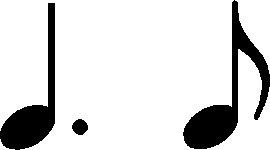



Issues : Main-line changes
- « Previous
- 1
- 2
- 3
- Next »
|
b. 28
|
composition: Op. 63 No. 2, Mazurka in F minor
..
It is unclear whether the different version of the beginning of the bar – b category imprint: Differences between sources; Corrections & alterations; Source & stylistic information issues: Main-line changes |
||||||||
|
b. 28
|
composition: Op. 63 No. 2, Mazurka in F minor
..
In As the 2nd beat does not differ from the version of bar 20, which must be the initial version, enhanced in the process of preparing the Mazurka for publication. category imprint: Differences between sources; Corrections & alterations; Source & stylistic information issues: Main-line changes |
||||||||
|
b. 29
|
composition: Op. 63 No. 2, Mazurka in F minor
..
As in bar 21, in As the melodic voice is moved one second higher compared to the final version. The remaining voices are not written out, which hints – also as in bar 21 – at repeating the version of bar 17. category imprint: Interpretations within context; Differences between sources; Corrections & alterations issues: Accompaniment changes , Main-line changes |
||||||||
|
b. 31-32
|
composition: Op. 63 No. 2, Mazurka in F minor
..
In As, only the upper R.H. voice is sketched, while the notation of the quaver in bar 31 is inaccurate and unclear – a spot of ink, which can be considered the note head, is located slightly below the middle of the stem of this quaver, which corresponds to the note a category imprint: Interpretations within context; Differences between sources; Corrections & alterations issues: Main-line changes |
||||||||
|
b. 34-36
|
composition: Op. 63 No. 2, Mazurka in F minor
..
Rhythmic comminution of the upper R.H. voice in bars 34 and 36 was introduced by Chopin only when preparing the Mazurka for printing. It is worth noting that in bars 23-24 and 31-32 the direction of changes was the opposite – the version with shorter rhythmic values was the original one (the category imprint: Differences between sources; Corrections & alterations issues: Main-line changes |
- « Previous
- 1
- 2
- 3
- Next »

 1 in
1 in  in
in 

 ). The stem itself ends at the height of d
). The stem itself ends at the height of d

 rhythm was replaced by a minim).
rhythm was replaced by a minim).